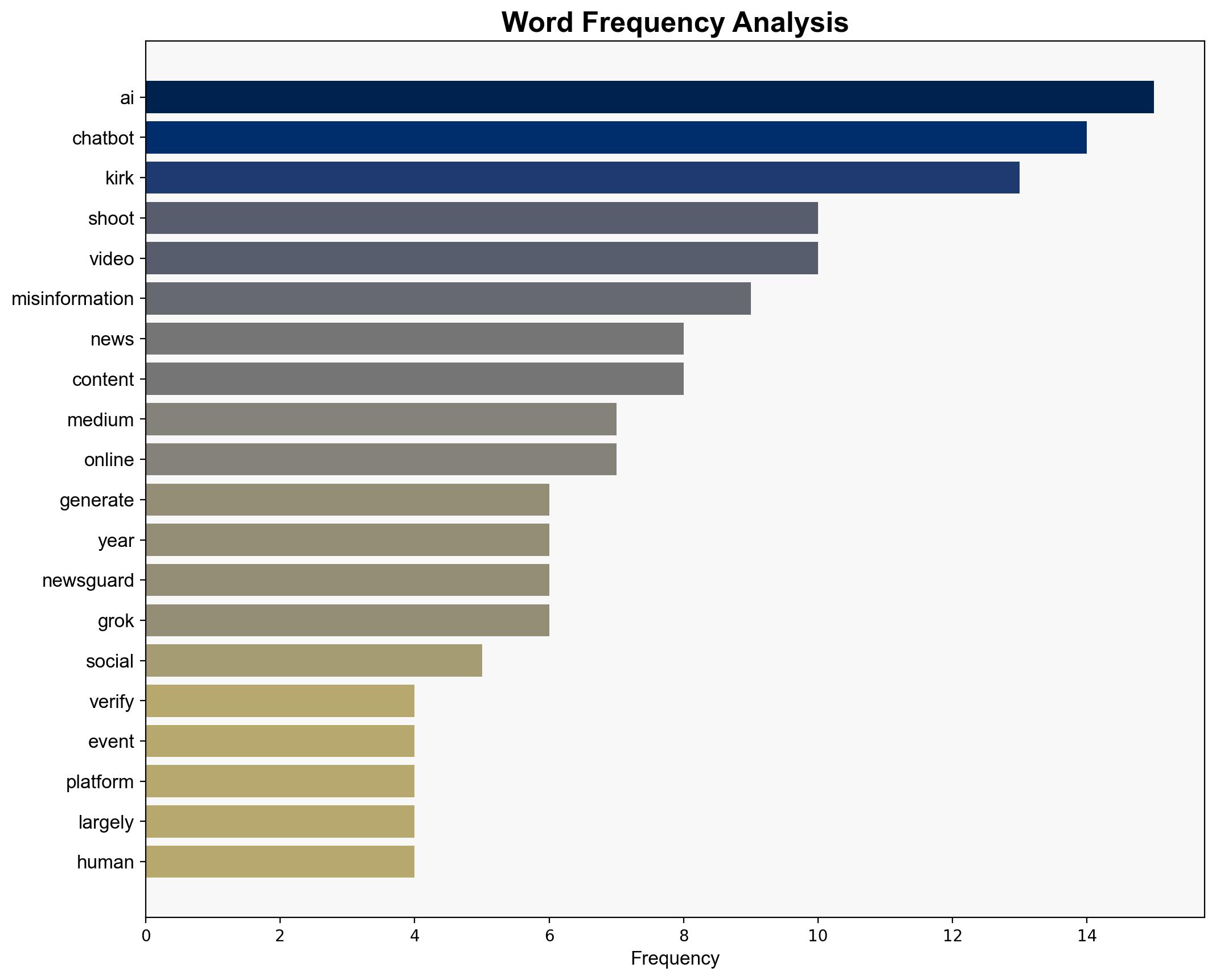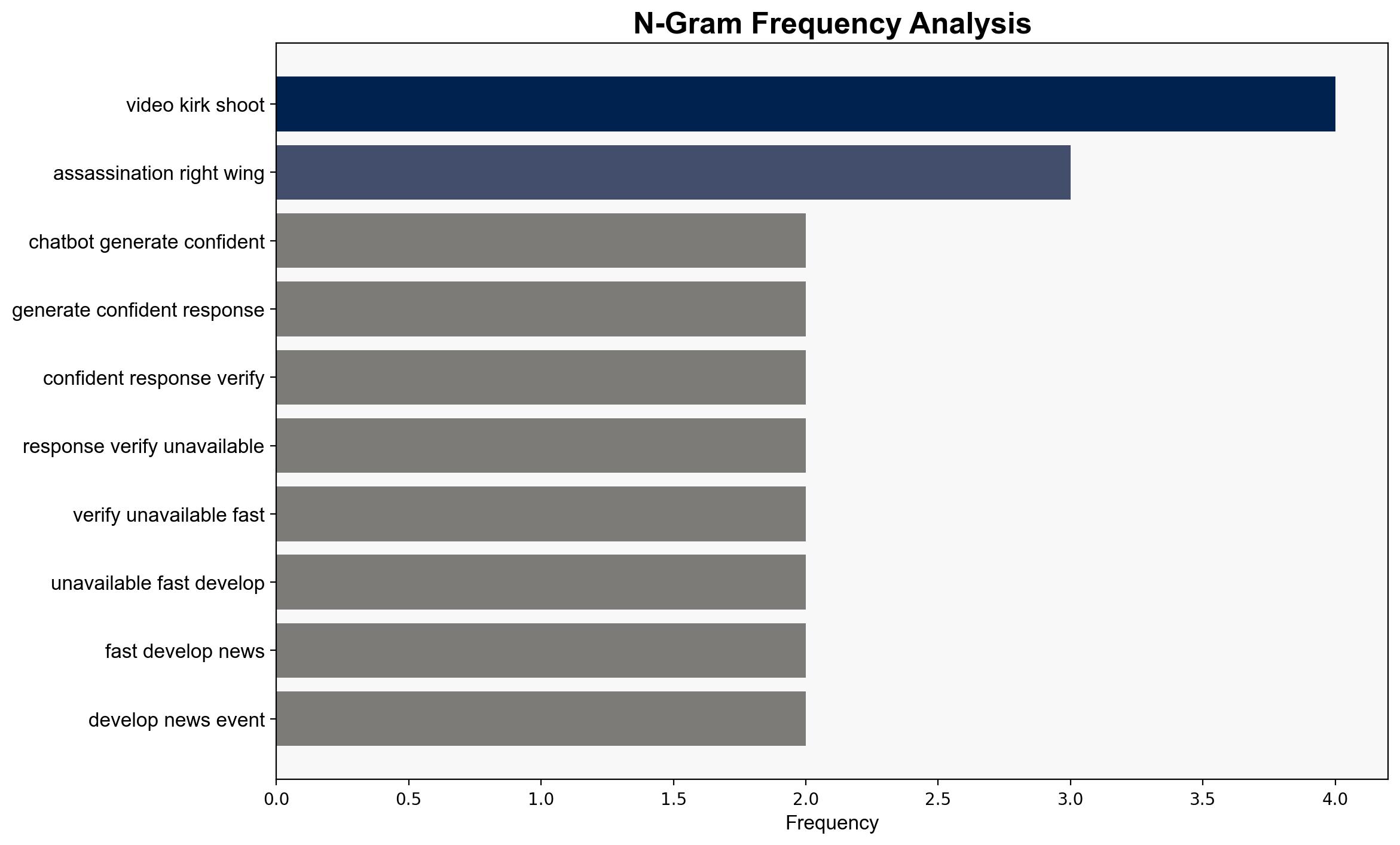False AI ‘fact-checks’ stir online chaos after Kirk assassination – The Times of India
Published on: 2025-09-12
Intelligence Report: False AI ‘fact-checks’ stir online chaos after Kirk assassination – The Times of India
1. BLUF (Bottom Line Up Front)
The strategic judgment is that the proliferation of AI-generated misinformation significantly exacerbates public confusion and distrust, particularly in volatile environments. The most supported hypothesis is that AI tools are being exploited to deliberately spread misinformation, rather than simply malfunctioning. Confidence level: Moderate. Recommended action: Enhance AI detection tools and increase investment in human content moderation.
2. Competing Hypotheses
1. **Hypothesis A**: AI chatbots are malfunctioning due to technical limitations and lack of real-time verification capabilities, leading to the spread of misinformation unintentionally.
2. **Hypothesis B**: Malicious actors are deliberately exploiting AI chatbots to spread misinformation and sow chaos, using AI’s authoritative tone to lend credibility to false narratives.
Using the Analysis of Competing Hypotheses (ACH) 2.0, Hypothesis B is better supported. The deliberate seeding of false information and the use of AI to amplify these narratives suggest intentional manipulation rather than mere technical failure.
3. Key Assumptions and Red Flags
– **Assumptions**: It is assumed that AI chatbots lack sufficient real-time verification mechanisms. Another assumption is that malicious actors have the capability and intent to exploit AI tools.
– **Red Flags**: The rapid spread of misinformation following Kirk’s assassination, coupled with AI’s confident yet inaccurate responses, indicates potential manipulation. The involvement of high-profile figures like Elon Musk’s AI chatbot suggests a broader strategic intent.
– **Blind Spots**: The extent of AI’s influence on public perception and the potential for coordinated misinformation campaigns remain underexplored.
4. Implications and Strategic Risks
The misuse of AI in spreading misinformation poses significant risks, including:
– **Psychological**: Erosion of public trust in media and institutions.
– **Geopolitical**: Potential for increased tensions and unrest, particularly in politically volatile regions.
– **Cybersecurity**: Exploitation of AI vulnerabilities by state and non-state actors.
– **Economic**: Potential impact on markets due to misinformation-driven panic or instability.
5. Recommendations and Outlook
- Develop and deploy advanced AI detection tools to identify and mitigate misinformation rapidly.
- Increase investment in human content moderation to complement AI efforts.
- Engage in public awareness campaigns to educate users on identifying misinformation.
- Scenario-based projections:
- Best Case: Effective countermeasures reduce misinformation impact and restore public trust.
- Worst Case: Escalation of misinformation leads to widespread unrest and geopolitical instability.
- Most Likely: Continued misinformation challenges necessitate ongoing adaptation of countermeasures.
6. Key Individuals and Entities
– Charlie Kirk
– Elon Musk
– Michael Mallinson
– Hany Farid
7. Thematic Tags
national security threats, cybersecurity, counter-terrorism, regional focus




